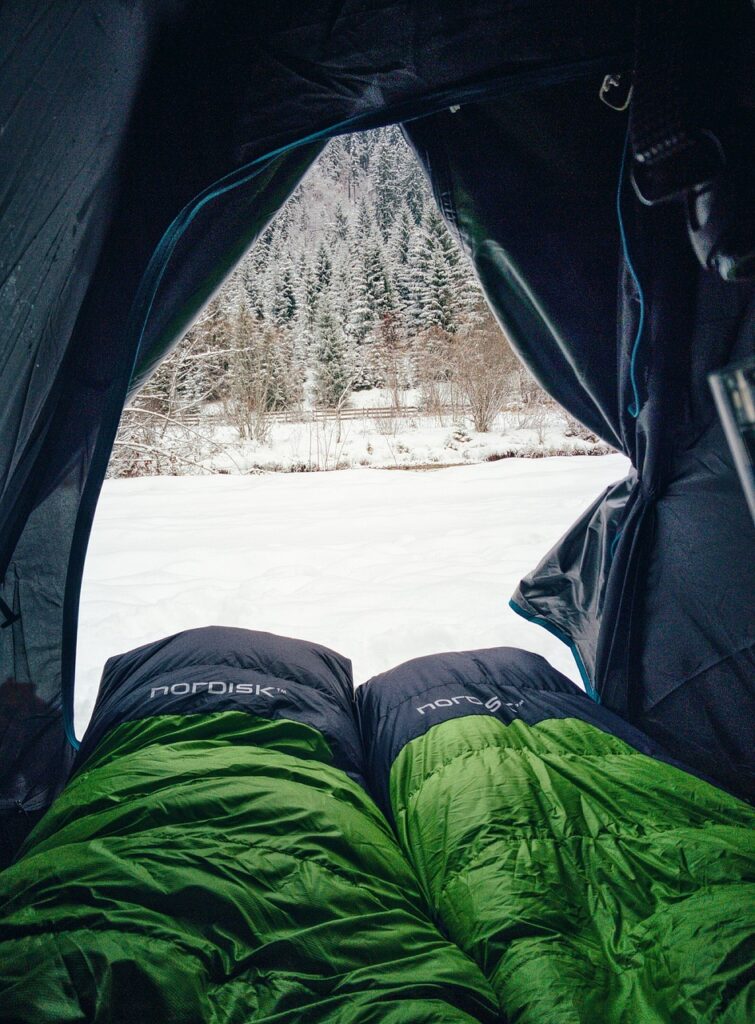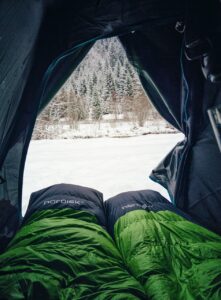Last Updated on April 3, 2024 by ETC Team

Backpacking, trekking, and camping require quite a bit of preparation, like planning a safe route, knowing where camping is permitted, prepping and packing trail-ready foods, and packing all the right gear. One specific category, your bedtime gear, is arguably the most vital part of your backpacking setup. This consists of your tent, down sleeping bag, sleeping pad. This trio is often heavy, expensive, and occupies the most space.
While some people will buy the lightest, most minimalist gear possible, we’re firm believers that if you’re going to skimp anywhere to save some weight or money, your sleeping setup is not the place to do it. If you’re going to explore and connect with nature’s beauty and get any sort of recovery sleep after a tough hike, or multi-day trip, you’ll need a tent, pad, and sleeping bag that are ready for the adventure.
Sleeping bags, like all other outdoor gear, span an incredible range of price and quality. Whether you’re a novice backpacker or an occasional camper, the basics of your choice are roughly the same. We almost always use down bags, because they are lighter, warmer, and compress smaller. But since it’s a big investment, finding the down sleeping bag that meets all your needs is important.
What to consider
There are several factors to take into account when choosing a down sleeping bag:
Insulation Type
Sleeping bags are either stuffed with down feathers or synthetic fibers — and some bags even have a blend of the two. Synthetic bags are cheaper and perform better when wet, but they’re heavier and don’t compress down nearly as small. Down sleeping bags are more expensive but they’re the top tier standard for most backpackers. Down bags also weigh less, compress smaller, are more durable, and can keep you quite cozy in freezing temps. Since we pretty much always recommend down over synthetic, this list will focus on down sleeping bags only.
Temperature Ratings
Every bag has a number in the title that refers to its temperature rating (in Fahrenheit). This rating system can get pretty complex, so we’ll keep it simple. Choose a bag that is rated slightly below the lowest temperatures that you will most commonly encounter.
Fill Power
Every sleeping bag also has a number called “fill power,” ranging from lows around 600 to highs around 950. Higher fill power is a higher quality down, which in turn affects the warmth-to-weight ratio. More warmth and less weight are obviously better. Insulating more efficiently with less size and weight makes a higher fill power more desirable, and thus more expensive.
Shape
Mummy bags are the most common sleeping bag shape. They have a tapered shape with less wasted space and fabric, closely resemble the contours of your body, which makes them smaller, lighter, and more thermally efficient than other shapes. Semi rectangular bags have more space to move, which also means more fabric and will lead to a heavier product. Quilts are another option, especially for minimalist backpackers and trekkers, as they minimize bulk by eliminating features, like the large hood that many campers rarely use.
Weight
Sleeping bags can get pretty bulky and heavy, so the overall bag weight is essential. We’d recommend staying around 4 pounds or less if your budget allows lighter tends to be more expensive so you will have to take that into consideration when selecting your bag. You can get a solid bag that compresses well, keeps you warm, and will last you quite some time for around $300.
Care
Just like a down jacket or vest, down sleeping bags need occasional washing. But they require special care: We’ve tried many a detergent, but Nikwax has proven most effective when cleaning delicate, technical fabrics.



